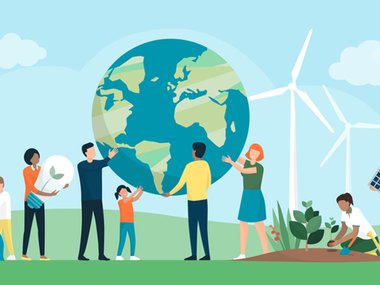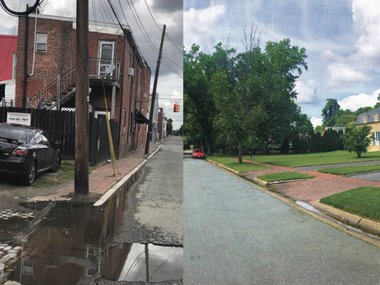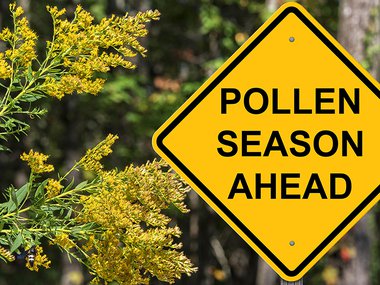Top 5 Takeaways from a New Climate Report
The Working Group II (WGII) contribution to the Sixth Assessment Report (AR6) of the Intergovernmental Panel on Climate Change (IPCC) just dropped. Say what?! What does all that mean, what does the report say, and what does that mean for Virginia? Don’t worry, we’ve got you covered with the top five things you should know.
First, let’s review the acronyms to make sure we’re all on the same page!
- IPCC: the Intergovernmental Panel on Climate Change is part of the United Nations. It’s made up of a group of member countries–195 to be exact–that collaborate to share scientific information with governments so they can develop climate-related policies.
- AR6: this stands for the Sixth Assessment Report. One of the major ways the IPCC shares important scientific information is through periodic and comprehensive reports that assess the most recent climate-related research. Each report (the first was published in 1990) looks at the scientific understanding, impacts, risks and adaptations to a warming climate. These resources–released every 6 or 7 years–are what policymakers use to inform decisions about climate priorities, sustainability goals and global negotiations.
- WGII: this is the Working Group II. The AR6 is made up of contributions from three working groups, appropriately named Working Group I, Working Group II and, you guessed it, Working Group III! Each group consists of hundreds of scientists who don’t conduct new research for the report, but instead volunteer their time to summarize available research in key areas: WGI explores the physical science of climate change; WGII looks at societal impacts, adaptation and vulnerability; and WGIII tracks heat-trapping gas emissions by countries (known as inventories). WGI’s report came out in August 2021, WGII was just released in March 2022 and WGIII is expected later this year.
Phew. Now that you understand all the pieces and parts of the very first sentence, here are the top five takeaways from the recently released WGII portion of the report.
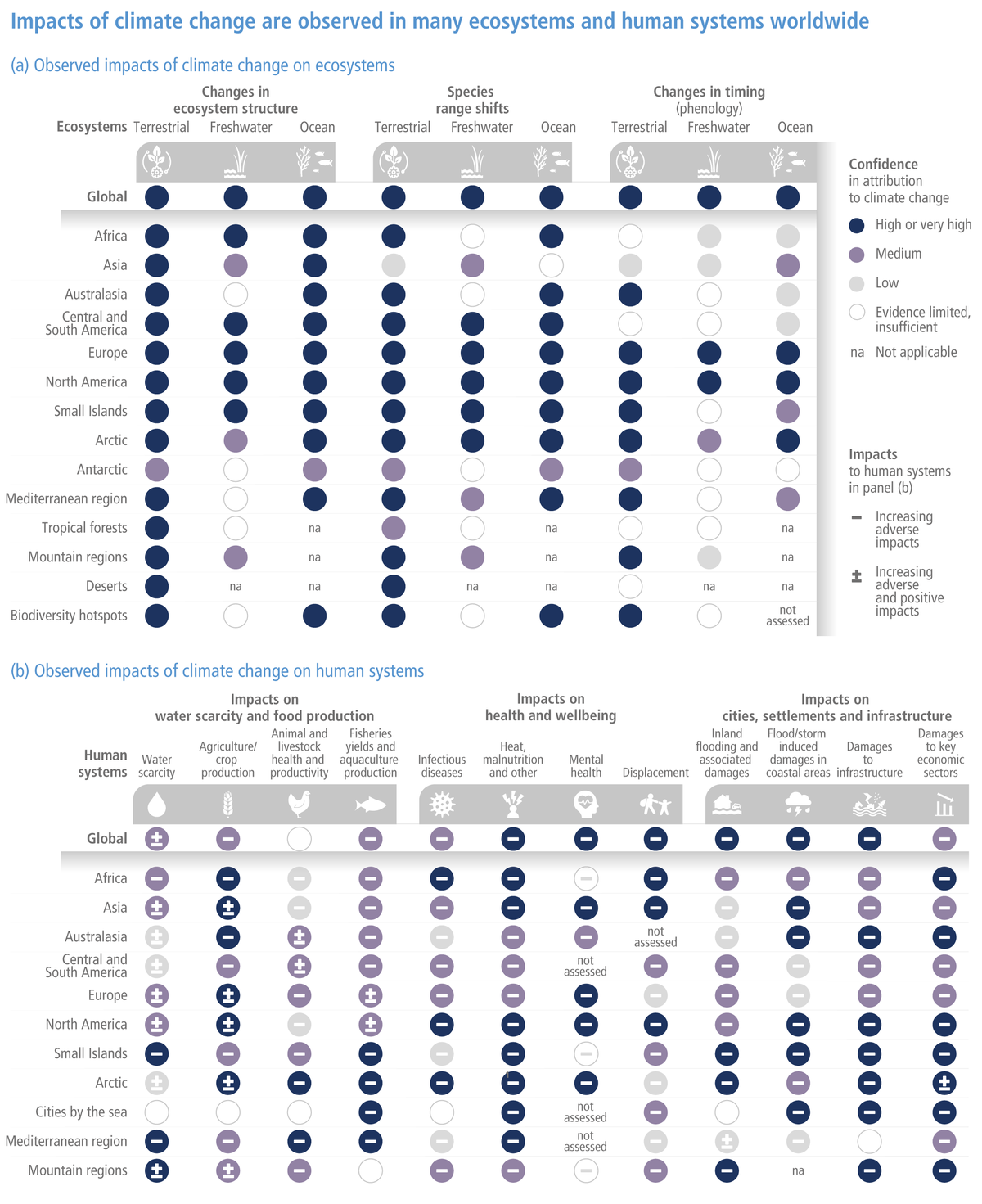
1) Big headline: climate change is happening here and happening now! Virginia and the people who live here are being adversely affected by climate change today. These include impacts from sea-level rise (especially in coastal communities), heat waves (public health, farm productivity, energy use), extreme rainfall (erosion of agricultural fields, overwhelmed infrastructure) and hurricanes (wind, rain, storm surge). These climate impacts are intensified by a warming climate. The more warming we allow through continued burning of fossil fuels, the worse these impacts will become. In addition, as you’ve heard us say before, these risks are already unevenly distributed among residents of our state, and disproportionately affect lower income and communities of color. These differences are likely to worsen as climate change intensifies.
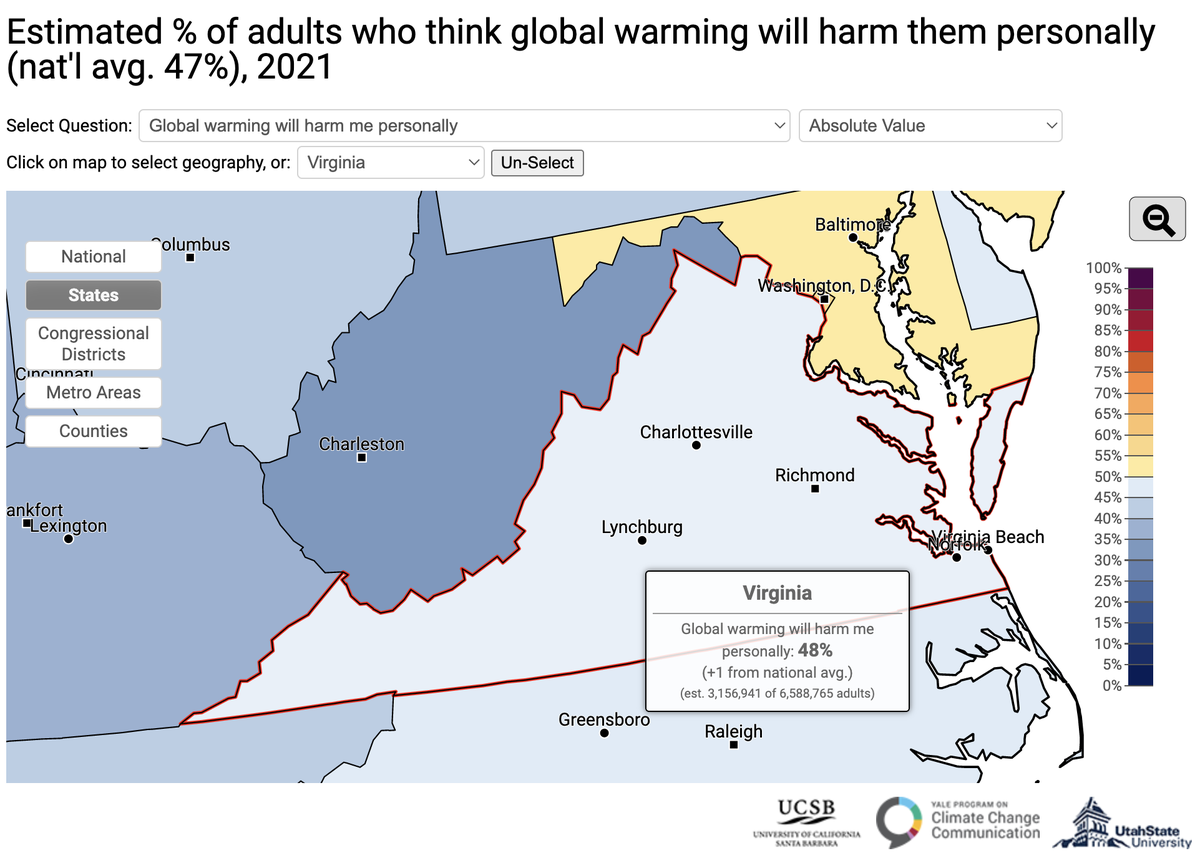
2) Barriers to action: the report outlines several barriers to effective and rapid climate adaptation, or put another way, strategies we might use to prepare for and absorb intensifying climate change stressors. Even with the near-absolute certainty of the human influence on climate change and its impacts, there is considerable public misperception of climate risks. As reported by the Yale Climate Opinion Maps, Virginia adults largely agree climate change is happening (74%) and is human-caused (59%), but few think of it as something that will harm them (48%) or consider it something they talk about with friends and family (38%). The resulting polarized public support for climate actions is thus delaying urgent climate adaptation here in Virginia and across the country. The sooner we all understand how climate change threatens the future of our traditions and daily lives, the sooner we can start sorting out the details of what we’re going to do about it. Arming ourselves to recognize and sift through climate and other disinformation is one way we can start to address this polarization.
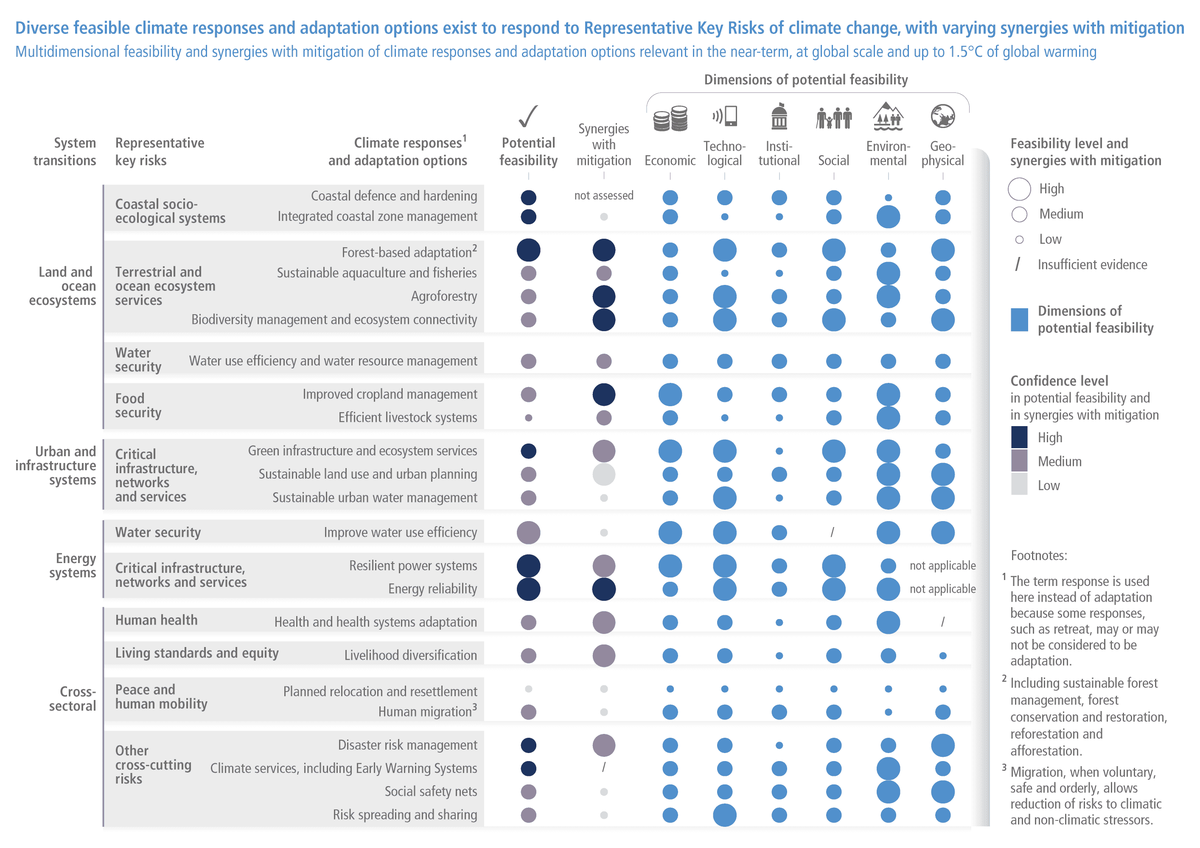
3) Benefits to adaptation: if we don’t limit global warming to at or below 1.5°C/2.7°C (an important goal set at the Paris Climate Summit in 2016), climate impacts are expected to rapidly intensify into the midcentury (and we’re already over 1°C since the industrial revolution). Thankfully, “immediate, widespread and coordinated implementation of adaptation measures aimed at reducing risks and focused on equity have the greatest potential to maintain and improve the quality of life for North Americans, ensure sustainable livelihoods and protect the long-term biodiversity, and ecological and economic productivity in North America.” This means we (and future generations) will end up in a much better world if we start adapting to climate change impacts now! That’s a pretty good reason to get started as soon as possible. There are a lot of options, and some are even more feasible and high-impact than others as shown in this chart:
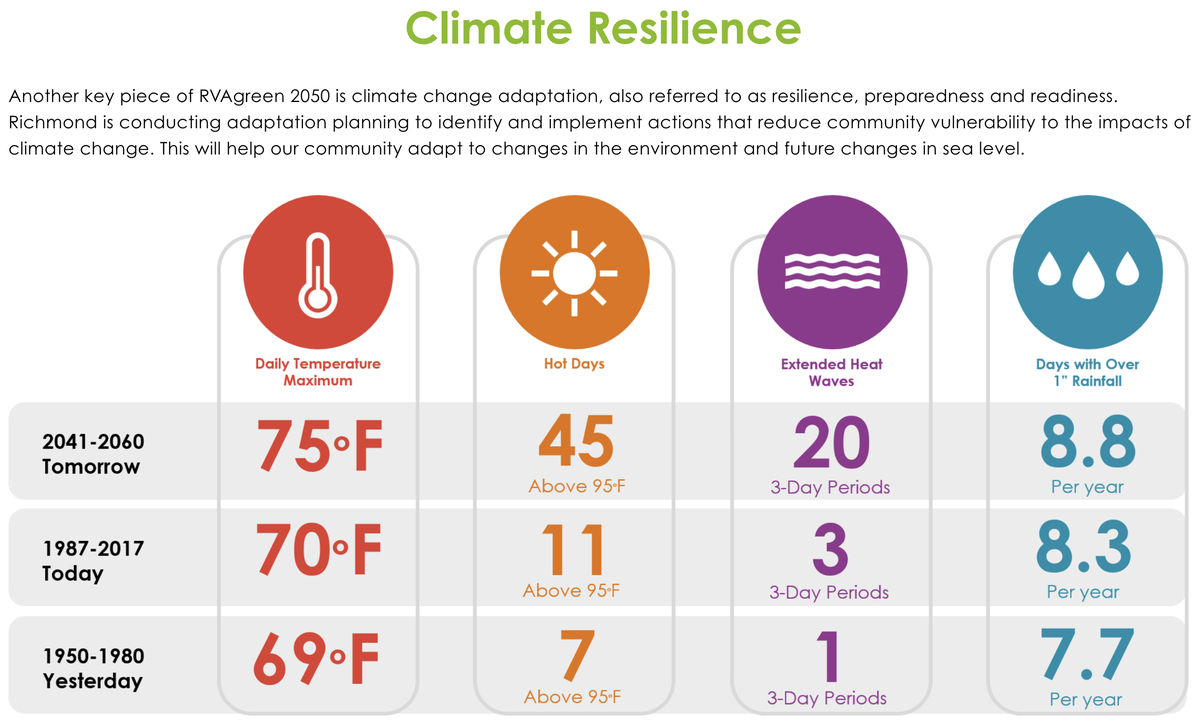
4) Climate resilient development: working climate change information into how we continue to grow our cities and towns can help us achieve climate resilience, or the ability to absorb the shocks of a climate event and to rebound and thrive in the aftermath. Richmond’s RVAgreen2050 climate action plan, which is still in development itself (community engagement begins soon!), is seeking to make Richmond’s future more climate resilient through community-informed strategies that you can help implement.
5) Action needed: there is still time to avoid the worst of climate change’s impacts by rapidly reducing our emissions of heat-trapping gasses and reaching what experts call net-zero as soon as possible. Remember: the largest long-term uncertainty in how many degrees of global warming we ultimately reach is what humans choose to do right now and in the near future to reduce their emissions of heat-trapping gasses.
